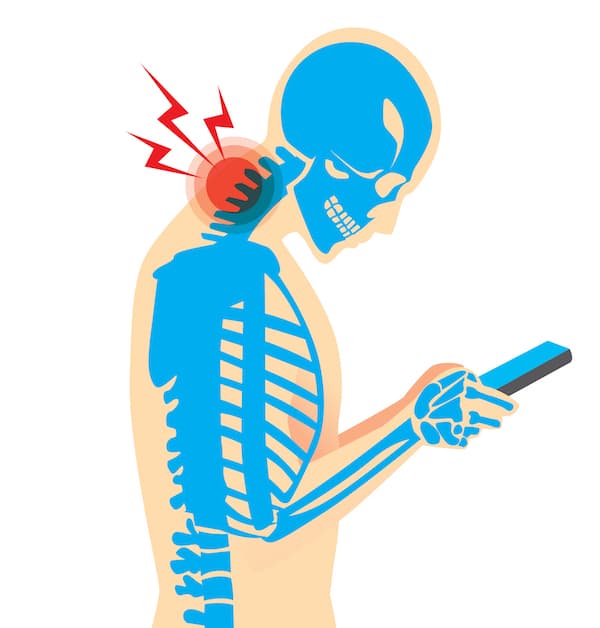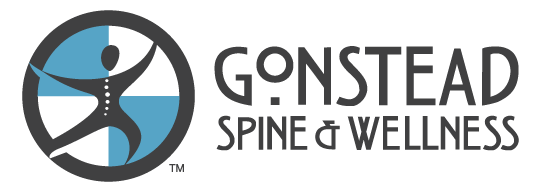“Text neck” is the term used to describe the increasingly common neck pain and damage sustained from looking down at your cell phone, tablet or other wireless devices too frequently and for too long.
A recent study shows that 79% of the population between the ages 18 and 44 have their cell phones with them almost ALL the time—with only 2 hours of their waking day spent without their cell phone on hand.
 The poor posture of bending your neck to look down does not occur only when texting. For years, we’ve all looked down to read. The problem with texting is that it causes us to look down—and people tend to do it for much longer periods. It is especially concerning because young, growing children could possibly cause permanent damage to their cervical spines that could lead to lifelong neck pain.
The poor posture of bending your neck to look down does not occur only when texting. For years, we’ve all looked down to read. The problem with texting is that it causes us to look down—and people tend to do it for much longer periods. It is especially concerning because young, growing children could possibly cause permanent damage to their cervical spines that could lead to lifelong neck pain.
How do you know if you have text neck? Most symptoms associated with this poor posture are neck pain, upper back pain ranging from a chronic, nagging pain to sharp, severe upper back muscle spasms. In addition, you may experience shoulder pain and tightness, possibly resulting in painful shoulder muscle spasms. If a cervical (neck) nerve becomes pinched, pain and possibly neurological symptoms can radiate down your arm and into your hand.
With the prevalence of cell phones and electronic devices, how can text neck be treated?
First, prevention is key. Here are several pieces of advice for preventing the development or advancement of text neck:
1) Hold your cell phone at eye level as much as possible
2) Take frequent breaks from your phone and laptop throughout the day. For example, set a timer or alarm that reminds you to get up and walk around every 20 to 30 minutes.
3) If you work in an office, make sure your screen is set up so that when you look at it you are looking forward, with your head positioned squarely in line with your shoulders and spine.
Many people don’t know this, but you need to have strong core muscles—the abdominal and lower back muscles—to support your upper body, including your neck. Your core muscles usually do not get enough exercise during normal daily activities, so you need to do specific exercises to target these muscles.
You also need strong and flexible muscles the neck to minimize strain on your cervical spine and help support the weight of your head. Again, your neck will not get sufficient stretching and strengthening during normal daily activities, so it is best to learn specific neck exercises with the help of a healthcare professional.
Some people will also benefit from a more comprehensive treatment plan, such as a combination of manual adjustments, massage therapy, and cold laser therapy.
Resource: Modern Spine Ailment Text Neck. Spine Health.
